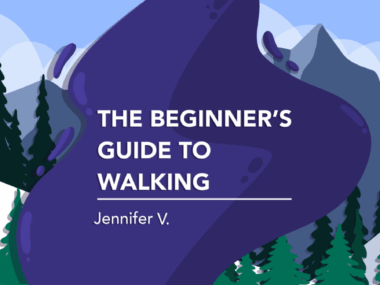My NMOSD Diagnosis Was a Long and Difficult Journey
Written by |

I was born and raised in Cuba, playing outside, running, and enjoying my friends. In my healthy teen years, I didn’t think I’d ever become chronically sick, much less stop walking.
However, everything changed when I watched a movie about a boy named Lorenzo who suffers from a degenerative neurological disease that causes paralysis. I started wondering what life would be like if I were unable to walk, and how that would impact my loved ones. I never imagined that many years later, I really would suffer from a degenerative neurological disease that can cause paralysis.
Years after watching the movie, I moved to Florida, in the United States of America. I had so many dreams. Even though I was 30 when I moved, I still wanted to go to college. My first plan was to work at the local Volkswagen dealership to save some money for college, and then I’d try to buy a car there later. After accomplishing that, I was accepted to an accelerated registered nurse program. I was so happy with my achievement, thinking one day I’d graduate and be able to help my family in Cuba more.
One day while driving on the highway, my vision blurred, so I drove really slowly to the next exit. On top of that, it was raining — one of those heavy rains Floridians are familiar with. The next thing I knew, my body’s left side felt dead, and I had no idea what was happening.
Unfamiliar with the area I was driving through, I tried to find the nearest emergency room while the other drivers frantically honked their horns because I was driving too slowly.
Once I got to the emergency room, they ran some tests. They did a CT scan of my head rather than an MRI because the latter was reserved for severe cases. Hospital staff sent me home because they couldn’t find anything abnormal in the CT scan results.
This was the beginning of a long series of visits to the emergency room before they finally admitted me to the hospital. I’d become paralyzed from my hip down. I couldn’t believe what was happening. Neurologists had no idea what I had. They asked where my family was, and I replied that they were in Cuba, but I didn’t want them to be informed because there was nothing they could do from there.
The only support I had outside the hospital was my boyfriend, who’s now my husband, but we had just started dating. I thought my medical mystery was a huge responsibility for someone who barely knew me. Despite that, he stood by me, even gathering friends from our old church for help.
To make a long story short, I spent two years in and out of hospitals without a diagnosis. I got IV steroids that relieved my condition for a while, before everything returned to the same vicious cycle. After those two years, an entire team of neurologists diagnosed me with multiple sclerosis, then prescribed a treatment for it.
Frustratingly, I was getting worse and worse, to the point that I was paralyzed from my neck down. I was taken to a different hospital this time, where after three months I was diagnosed with neuromyelitis optica spectrum disorder (NMOSD), previously known as Devic’s disease. It’s a rare neurological degenerative disease about which not much was known back then. The only things my doctors knew were that it has no cure and the medicines prescribed for multiple sclerosis worsened my NMOSD condition.
Since then, I’ve been on a medication that is not approved by the U.S. Food and Drug Administration, though it has prevented a new relapse. Thank God, I resumed my life, though I had to make some adjustments. I finished my bachelor’s degree — not in nursing, but rather in education — and got married. I am now working part time as a certified medical interpreter in Spanish, helping members of the Spanish-speaking community with limited English proficiency to overcome language barriers at their medical appointments.
I want to assure you that although having NMOSD or any other rare disease is not an easy road, it’s also not the end of your life. I really hope and pray that my experience will encourage you.
Follow me on my Facebook page to learn more about my journey.
***
Note: Neuromyelitis News is strictly a news and information website about the disease. It does not provide medical advice, diagnosis, or treatment. This content is not intended to be a substitute for professional medical advice, diagnosis, or treatment. Always seek the advice of your physician or other qualified health providers with any questions you may have regarding a medical condition. Never disregard professional medical advice or delay in seeking it because of something you have read on this website. The opinions expressed in this column are not those of Neuromyelitis News, or its parent company, Bionews, and are intended to spark discussion about issues pertaining to neuromyelitis optica spectrum disorder (NMOSD).





Leave a comment
Fill in the required fields to post. Your email address will not be published.